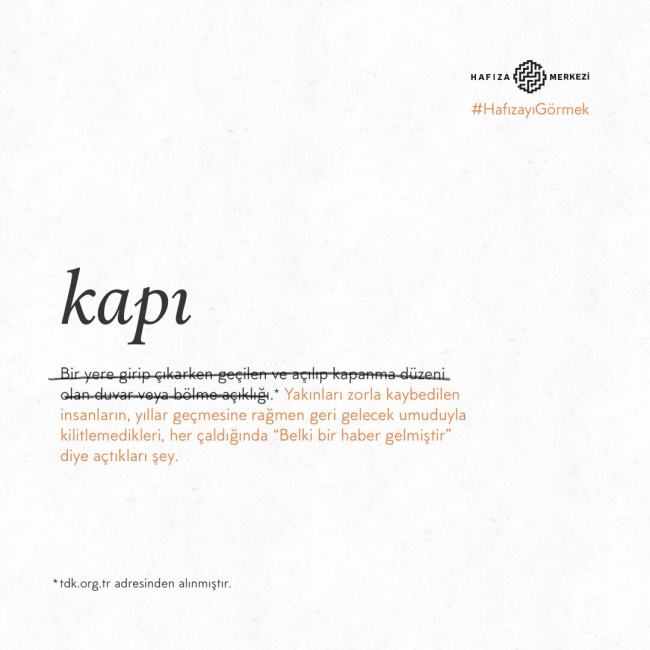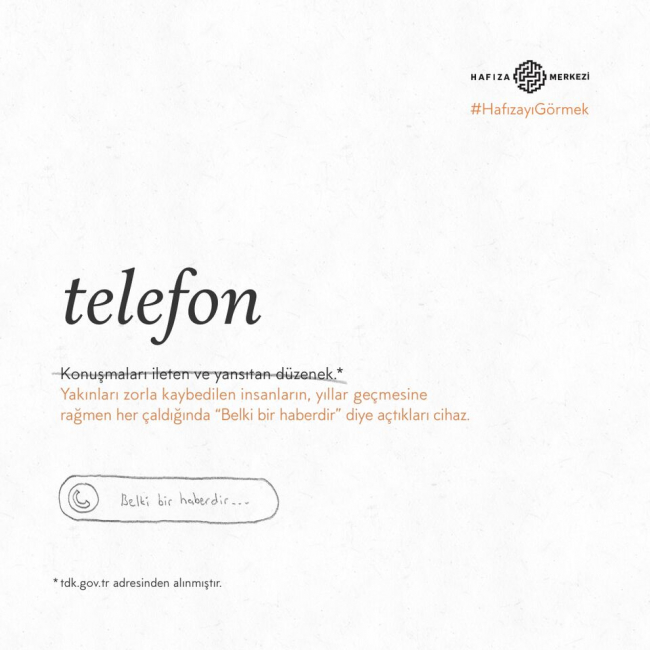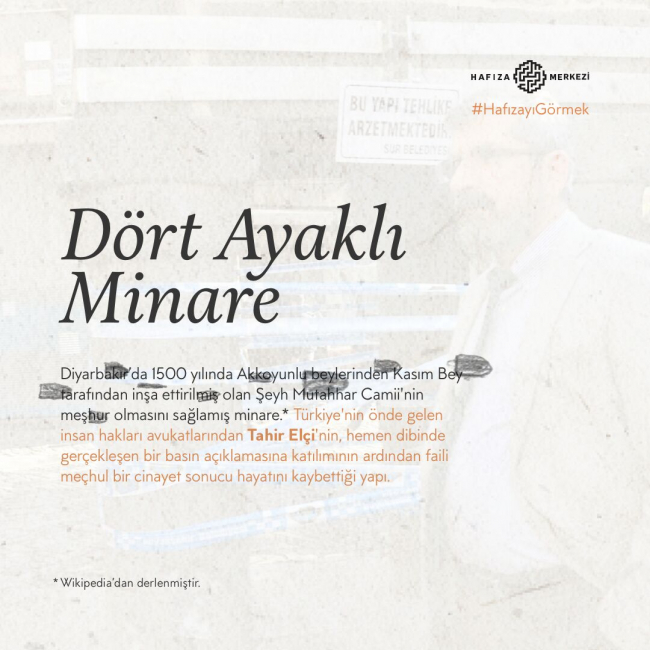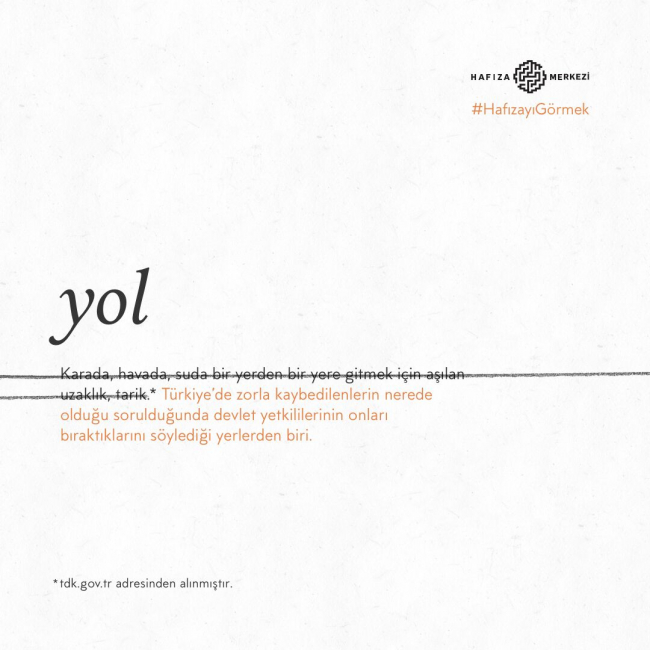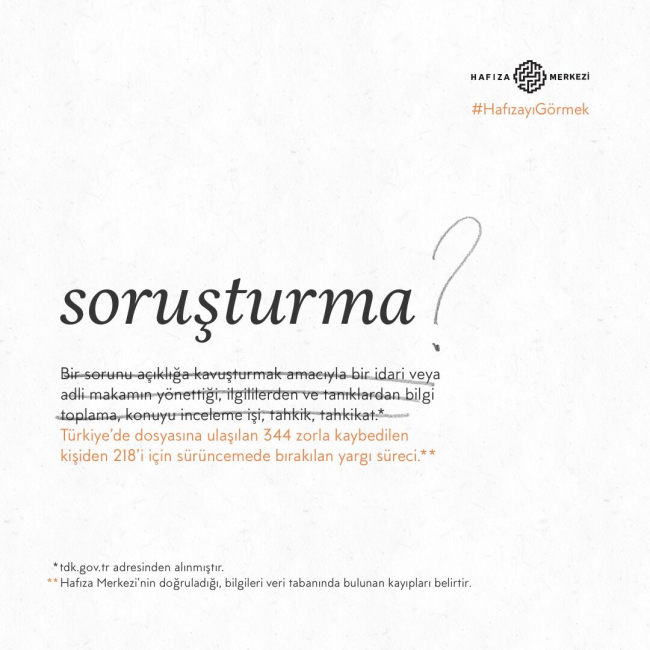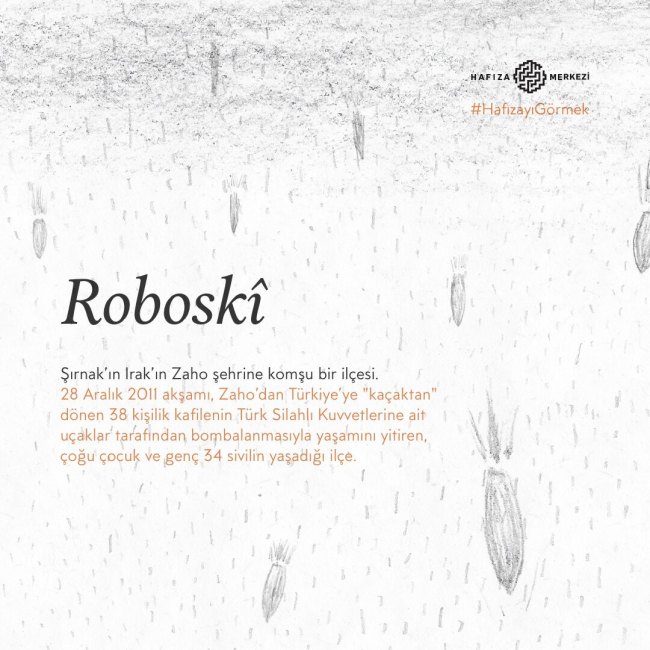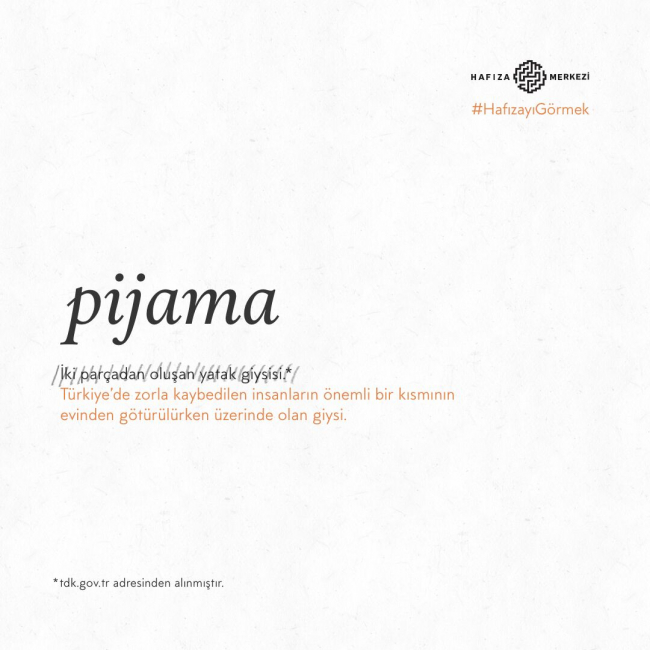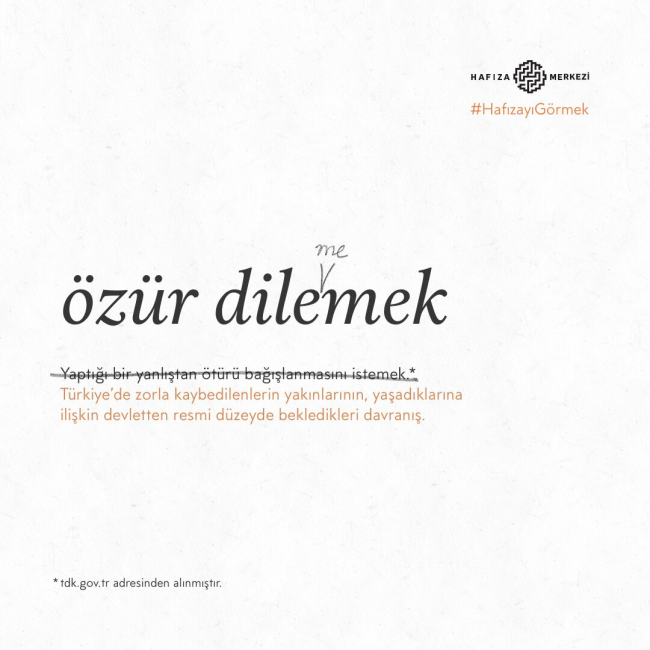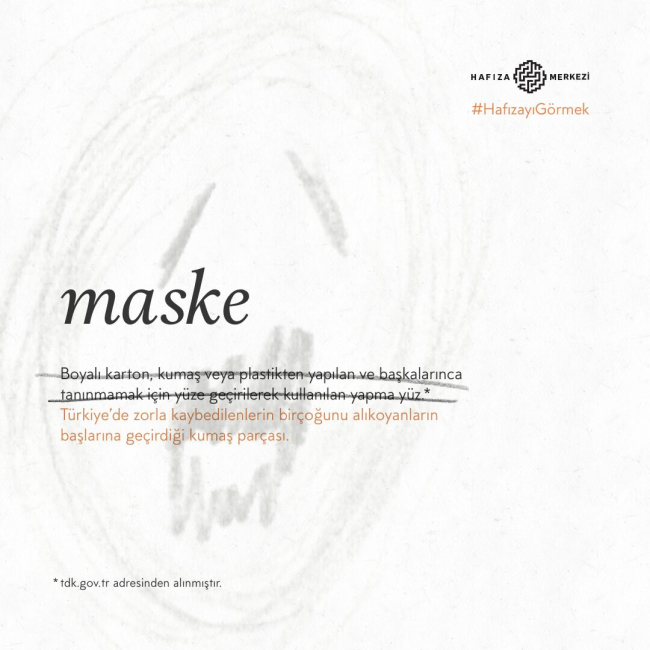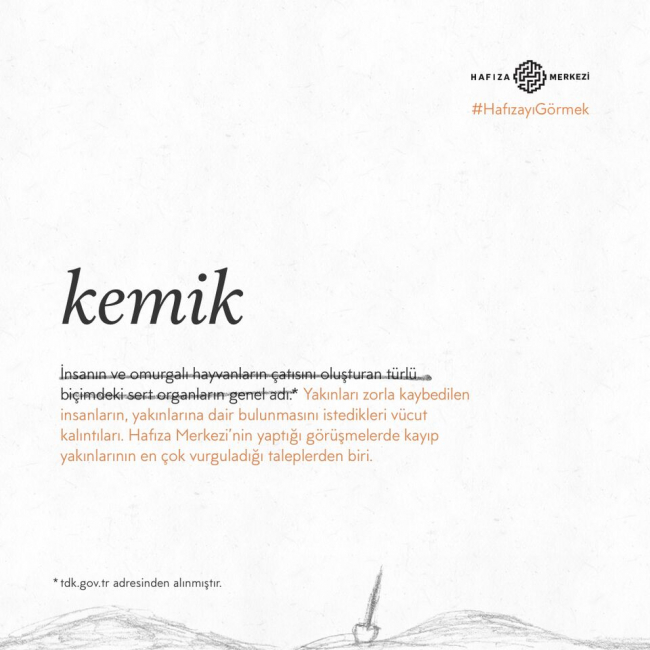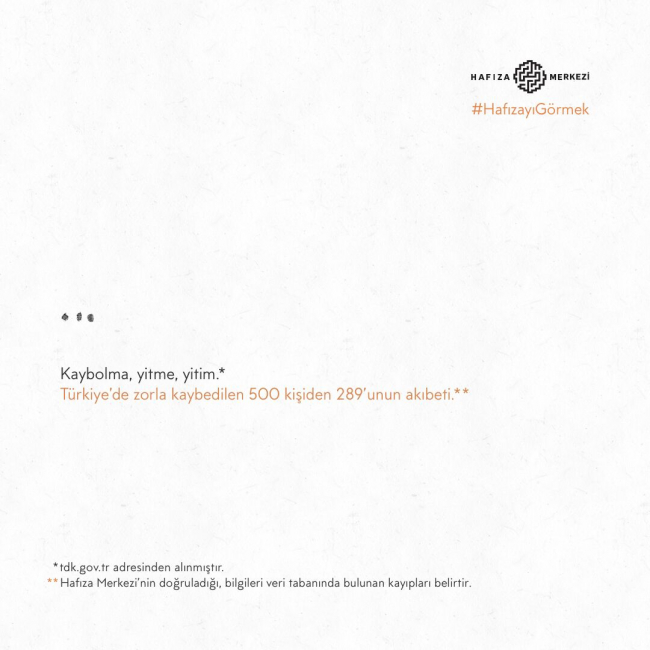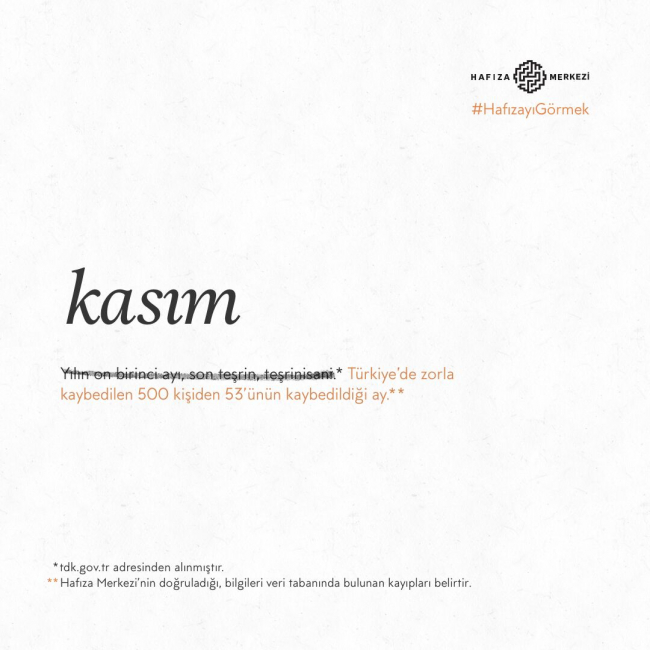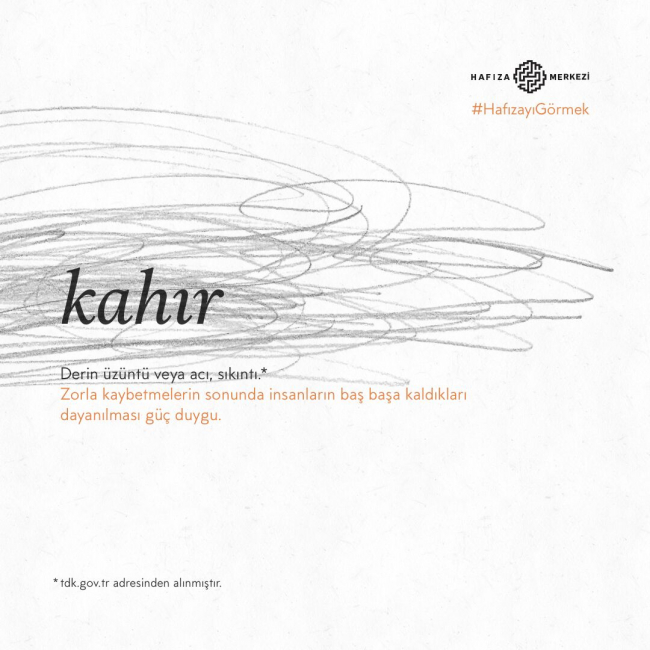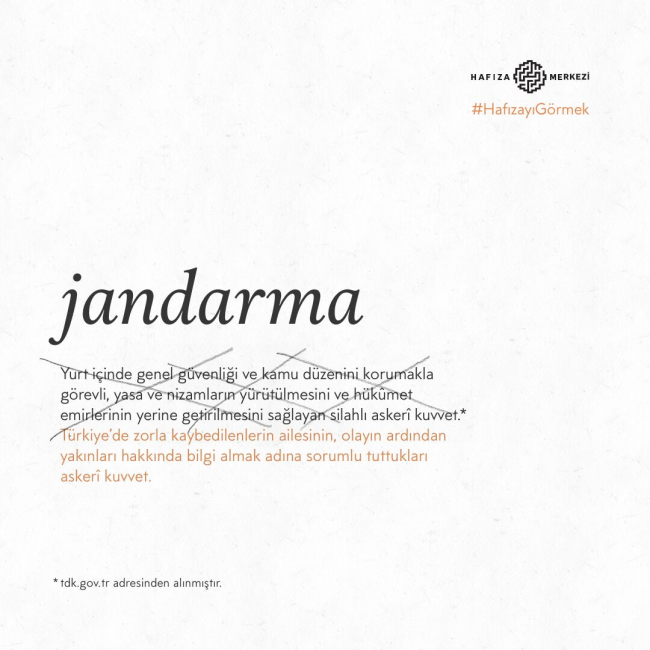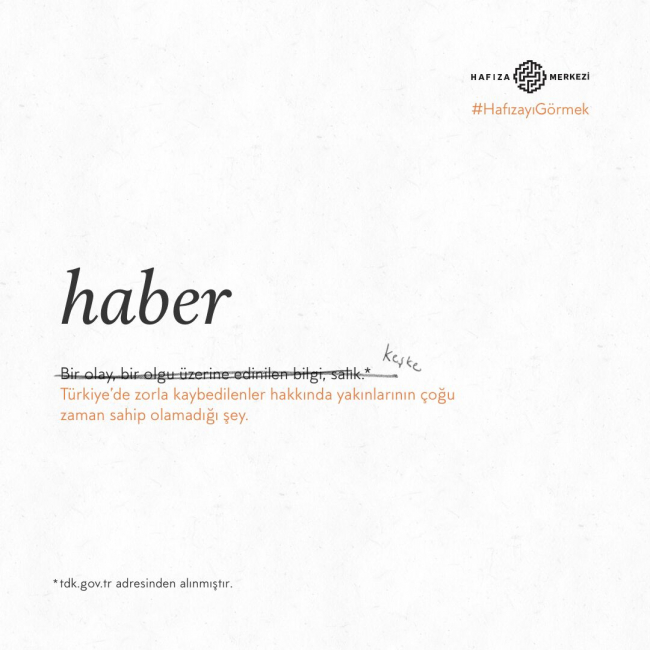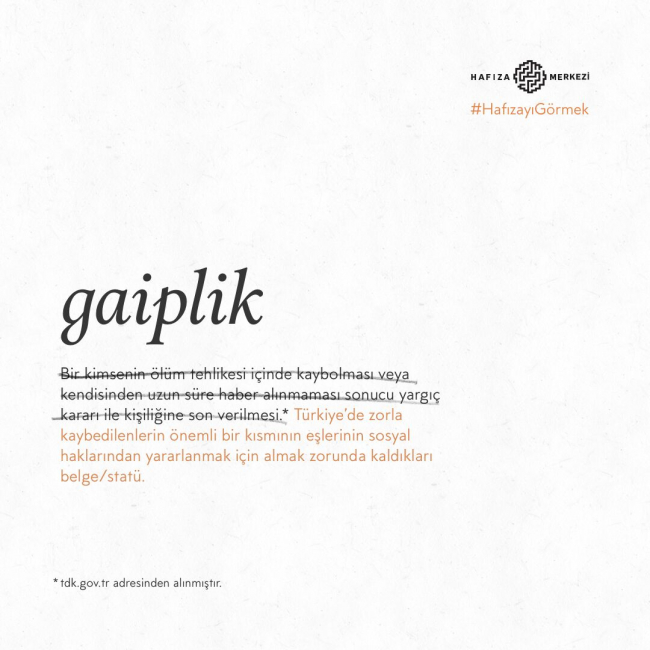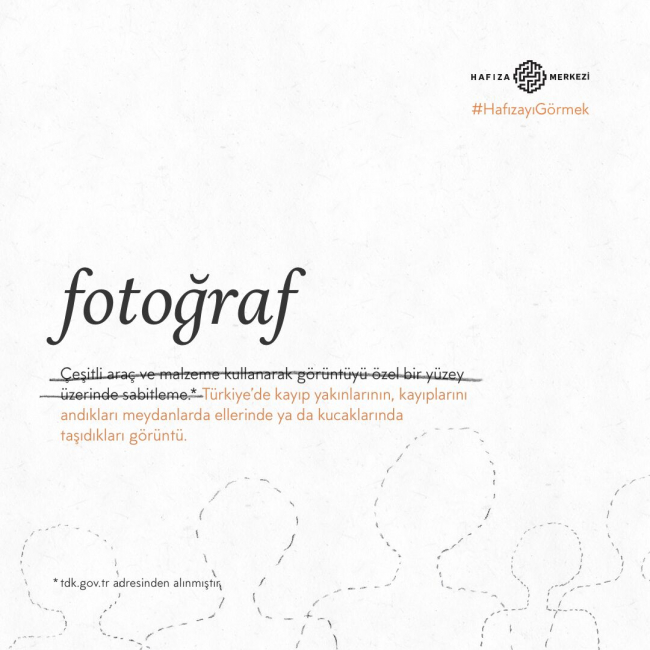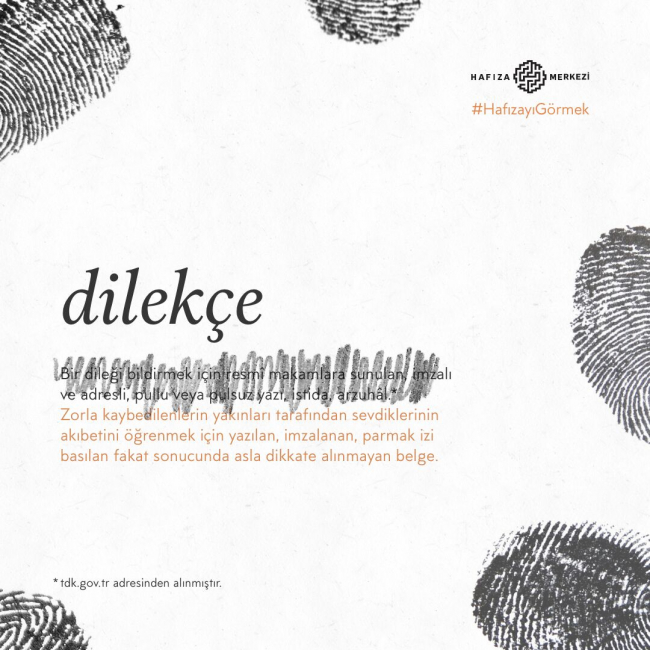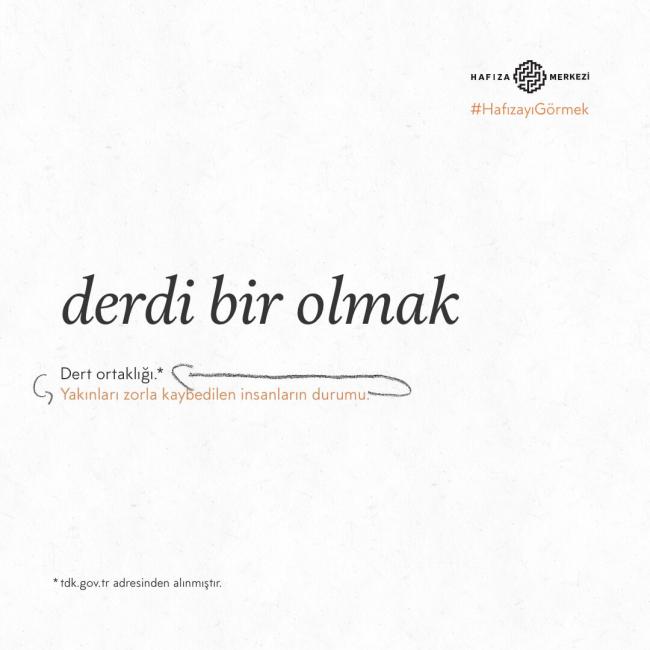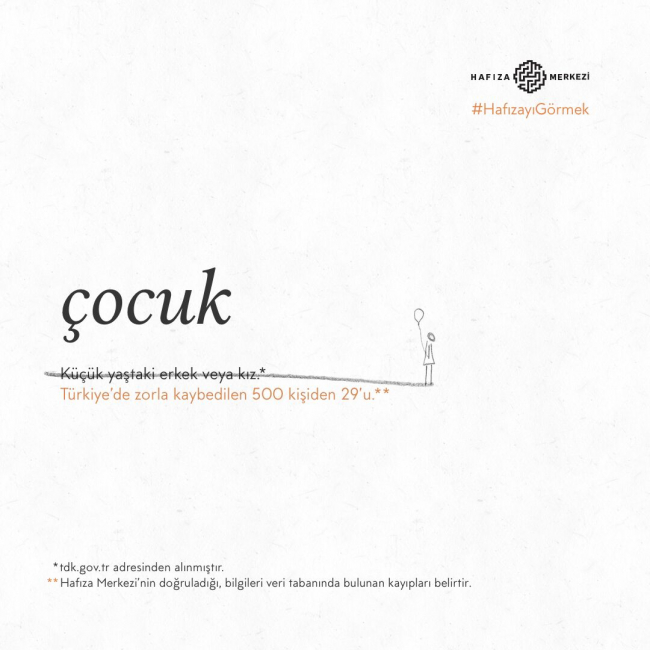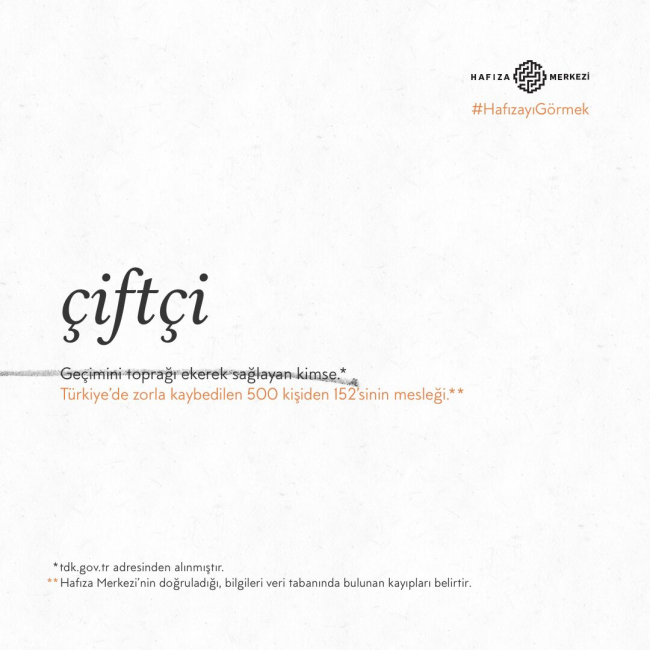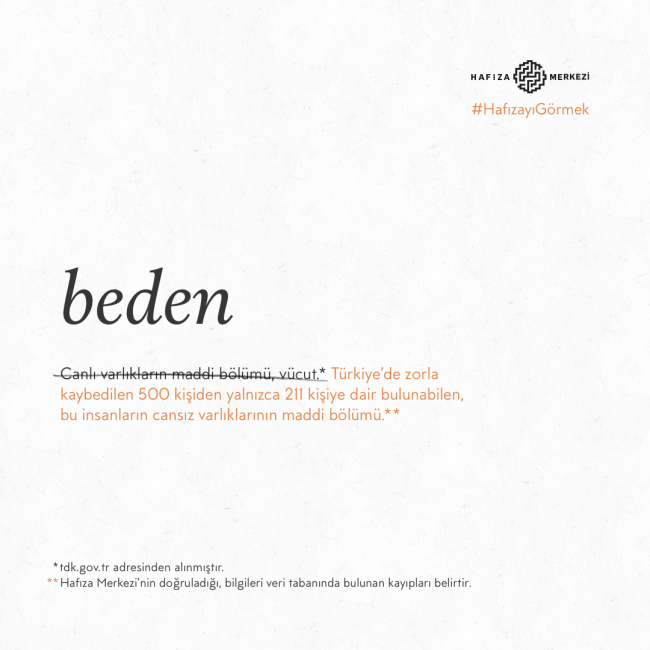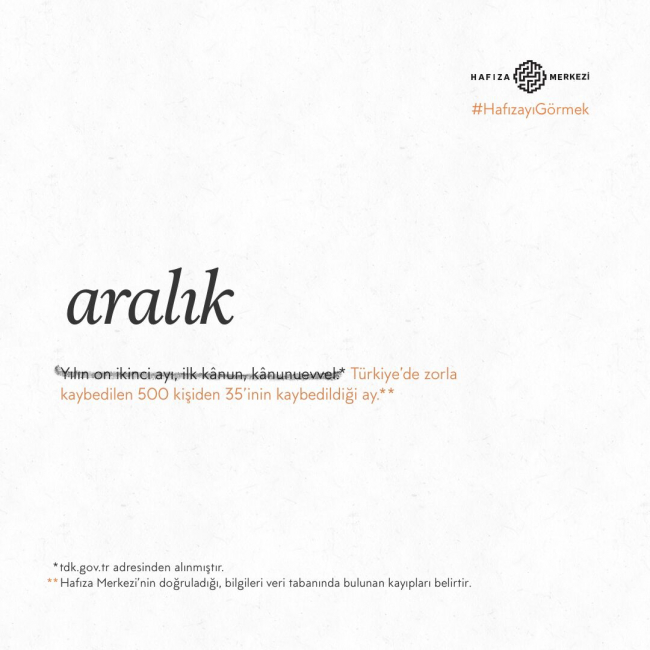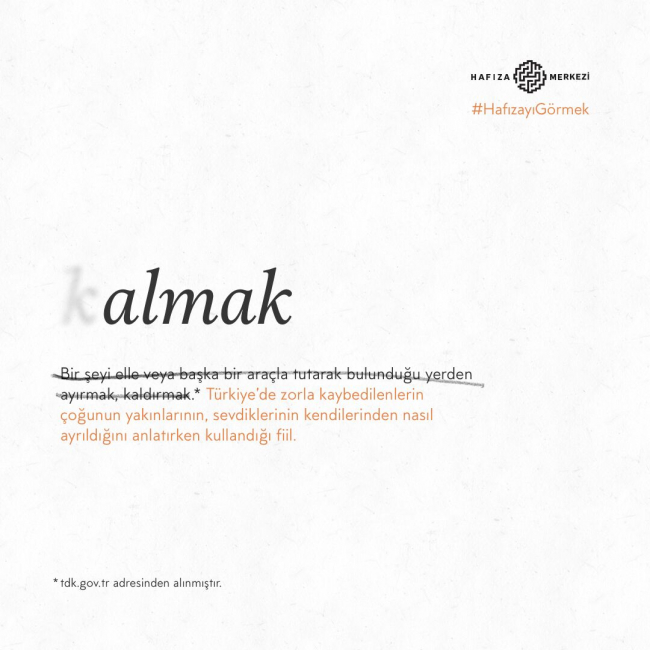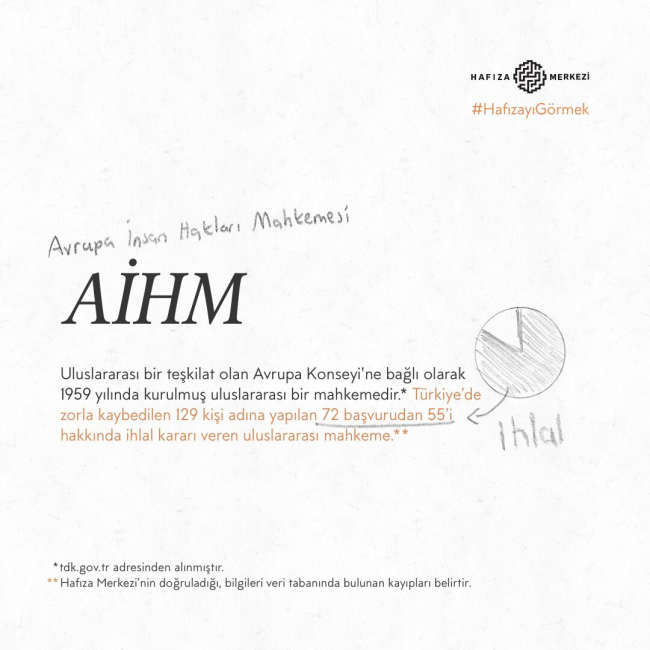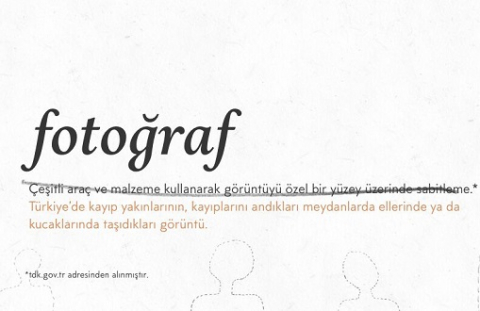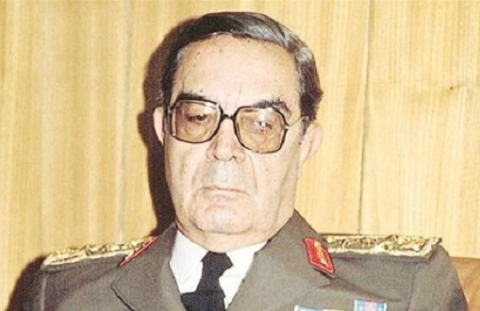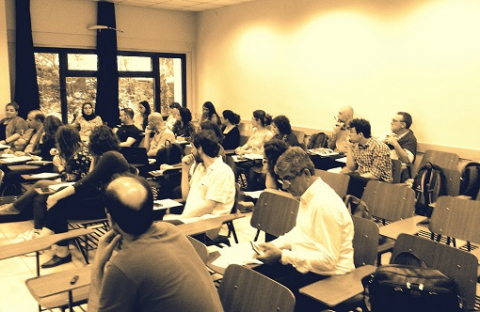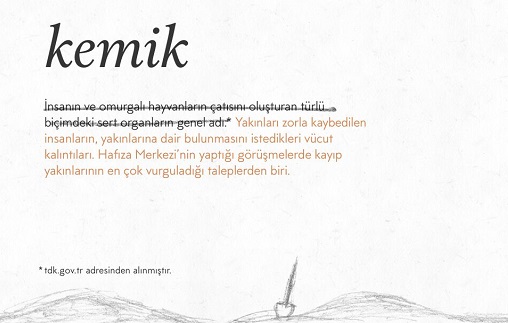
Enforced disappearances in the dictionary of the disappeared
Sometimes, the best way to convey the uniqueness of the pain experienced by a victim of a crime is to describe how they relate differently to things considered ordinary by society. Bone, body, telephone, door, pajamas, mask, petition, farmer, photograph… All of these words may come to mind with only their dictionary meanings for many of us. Yet in the universe of enforced disappearances, the same words and concepts take on entirely different meanings and associations.
The Dictionary of the Disappeared was a social media campaign designed to convey the cruelty of the crime of enforced disappearance and the suffering of its victims by using the objective meanings of words. The idea was first proposed by Pınar İlkiz, one of the founders of Pikan Agency, during the workshop we organized on February 11, 2017.
This workshop, which aimed to explore innovative visual tools for telling the story of enforced disappearances in ways that resonate with how new generations relate to the world, brought together around 40 participants with interests in areas such as databases, programming, data visualization, video, gamification, visual arts, and communications. Many prototype ideas for visual storytelling emerged during the workshop. In the follow-up phase, where we worked on developing some of these ideas, The Dictionary of the Disappeared became one of the projects we were able to bring to life.
In the preparation phase of the campaign, carried out in collaboration with Pikan Agency, we first reviewed Hafıza Merkezi’s data sources—our enforced disappearances database, reports, and interviews with the relatives of the disappeared. The words we identified through this review were ones that had ordinary meanings in daily life but pointed to specific characteristics of the crime within the emotional world of the relatives. For instance, in some of our interviews, relatives mentioned that when their loved ones were taken from their homes by security forces, they were not even given time to change out of their pajamas. The sorrow of being pulled away from the safety of one’s home and family became symbolically associated with the image of pajamas in these narratives. Door and telephone emerged as words closely linked with hope. Even after all these years, many relatives still feel that “maybe it’s them” when the doorbell rings or the phone rings. Sadly, this kind of hope prevents closure and prolongs grief. In total, we identified 27 such words and concepts.
As the preparation continued, we developed definitions for each word that captured how they reflected the world of the disappeared. While conveying these trauma-laden experiences, we had to both draw the attention of the general public and remain sensitive to the gravity of the issue. To balance these two needs, we adopted a thoughtful approach to both text and visual design. Once the content and visuals were finalized, we shared the dictionary entries throughout October, November, and December of 2017. With this work, we hope to have created an innovative memorialization initiative that uses social media as its platform.
Campaign visuals
Below you can find all the visuals we shared on our Twitter, Facebook, and Instagram accounts between October 24 and December 28, 2017. Click on the images to view them in full size.
